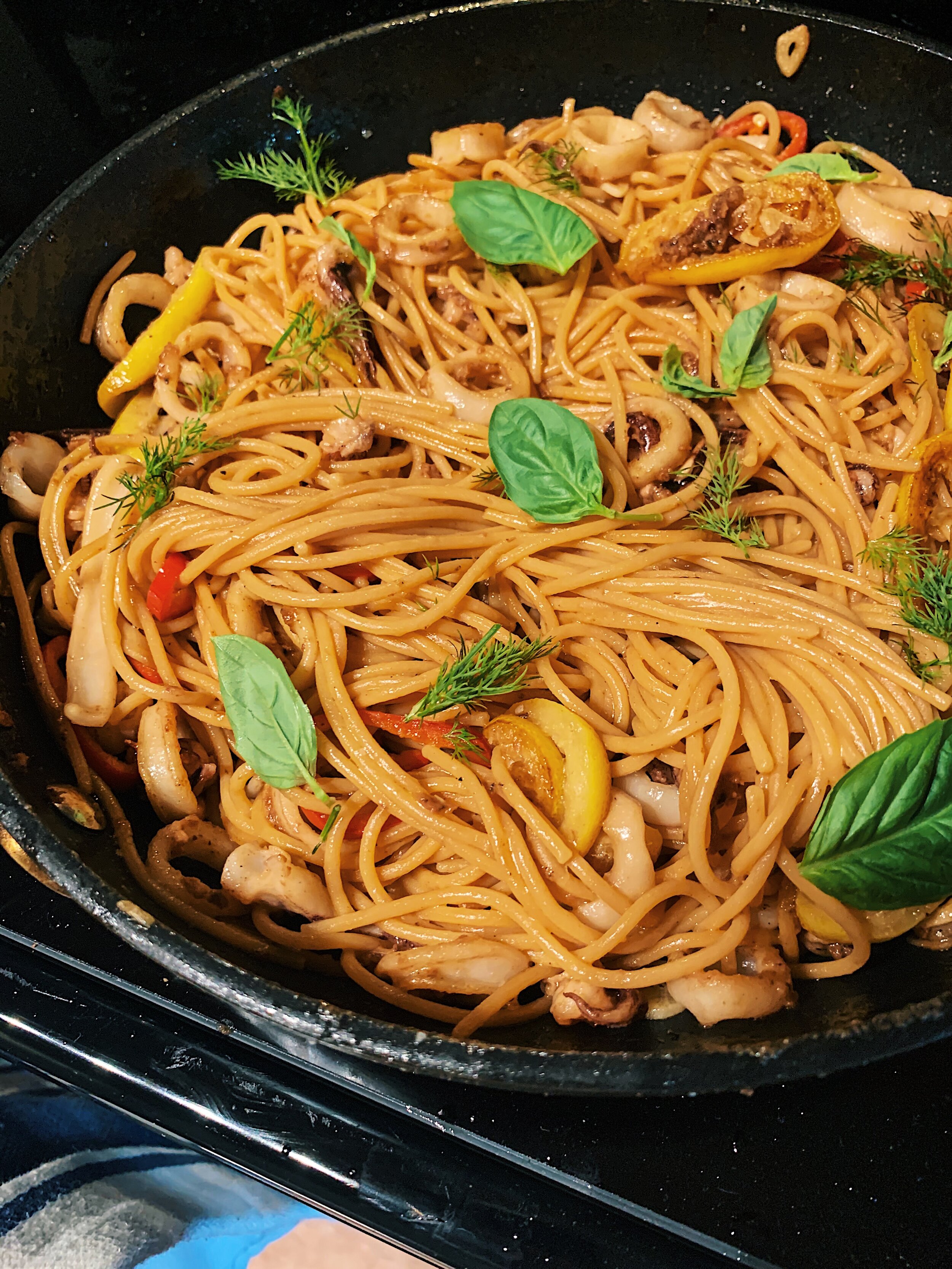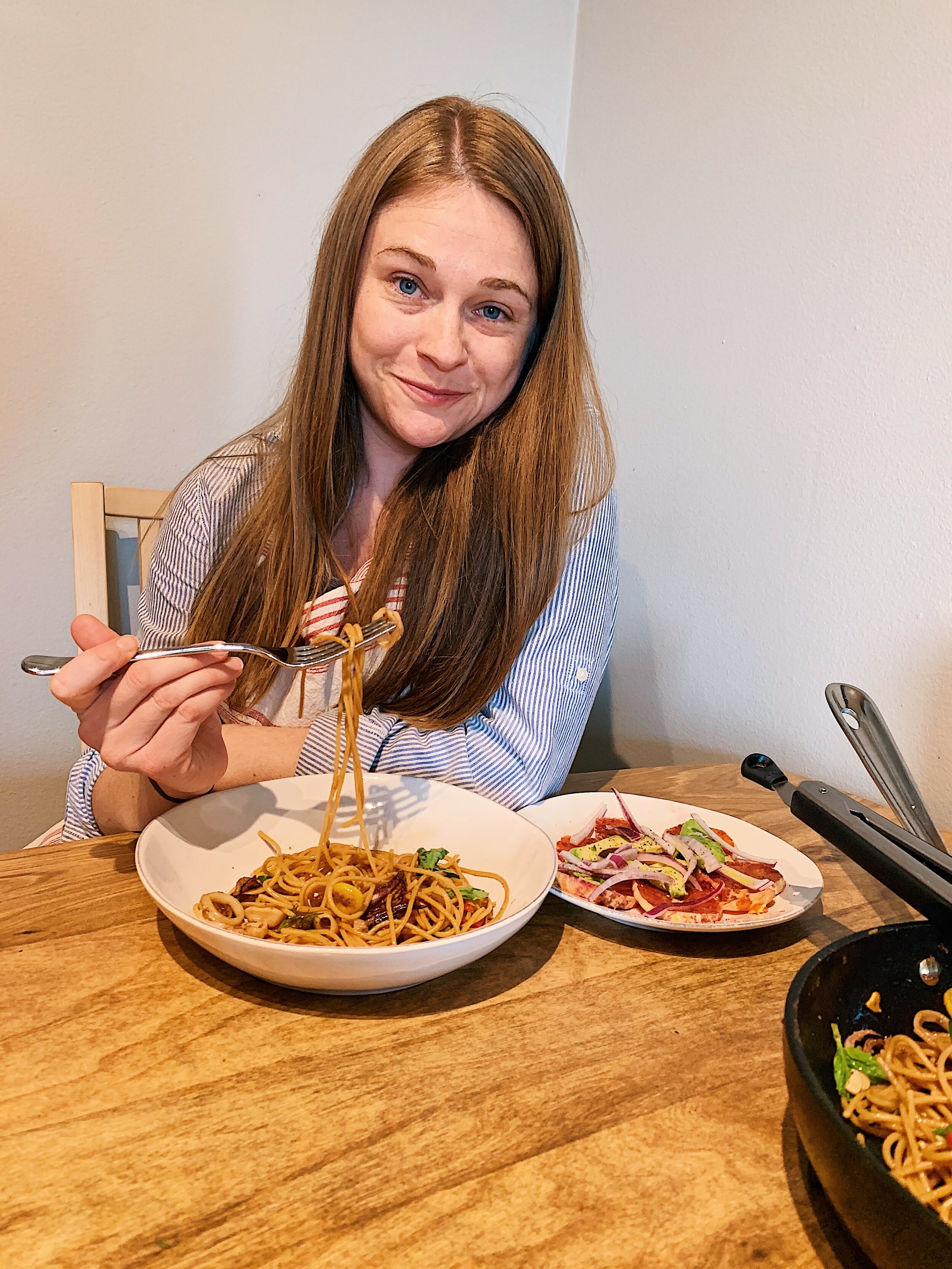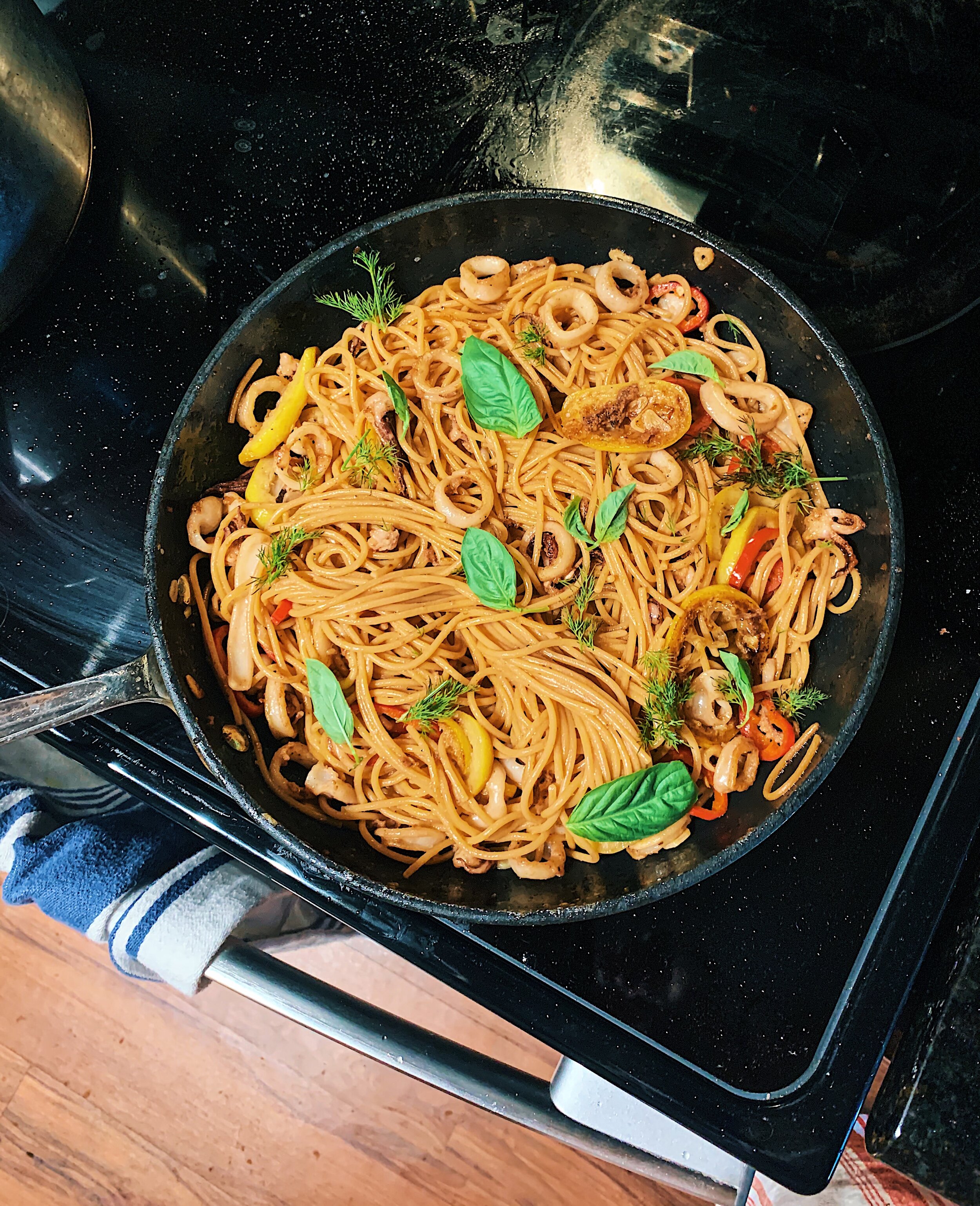Did you also read this recipe title and think, “what? no, no thanks.” I was chatting with Margaret on the phone tonight and at one point she asked, “any standouts for the blog lately?” “Yeah!” I said, “Actually this iceberg salad with pickled chiles and olives was just incredible.” “Eh, really? Doesn’t sound incredible…” said Margaret. And to a large degree, she’s right. It doesn’t sound incredible to me, either. In fact, when I first read the recipe last January, I marked it down as one that I didn’t look forward to making.
But if by some odd grace you’ve found yourself reading this blog post, then please, FORGET how this recipe title sounds, and BELIEVE me when I say that it is 100% worth making. So much so, that I even found myself snacking on its leftovers.
The first step is to thinly slice the jalapeno and white onion and pickle them both in white wine vinegar and honey. Alison asks for five minutes of pickling. I gave them close to thirty, because why not? More pickling is best, in my opinion, and my guess is that Alison agrees. She probably just wanted to make this recipe seem *quick* and *not fancy,* which I get but will ignore.
I chopped the iceberg lettuce into square sheets and scattered them with crushed olives. When it was almost time to eat, I tossed the lettuce with the pickling mix and served it up in bowls. Now here’s where I choked. I forgot the pecorino and olive oil. I didn’t miss either element because the acid and heat are so strong, but they would have been nice. That’s what I get for preparing the salad elements so far apart. I was distracted by the other parts of our meal (Alison’s Slow-Roasted Pork Shoulder with Garlic, Citrus, and Cilantro and corn tortillas) and understandably let the salad be an afterthought.
When eating the meal, the salad was anything but an afterthought. I liked it even better than the pork, and found myself picking leaves and olives out of the salad bowl after I’d finished eating what was on my plate. This is not a normal eating habit for me. I might snack off a serving bowl or plate that has chips or something sweet. But salad leaves? This tells you that the flavors - tangy, spicy, a tad sweet - work really well, and frankly work far better than most of Alison’s other salads. As we were cleaning up, Jordan said, “That was hands-down the best Alison Roman salad you’ve made.” I can almost agree.
151 recipes cooked, 74 to go.



























